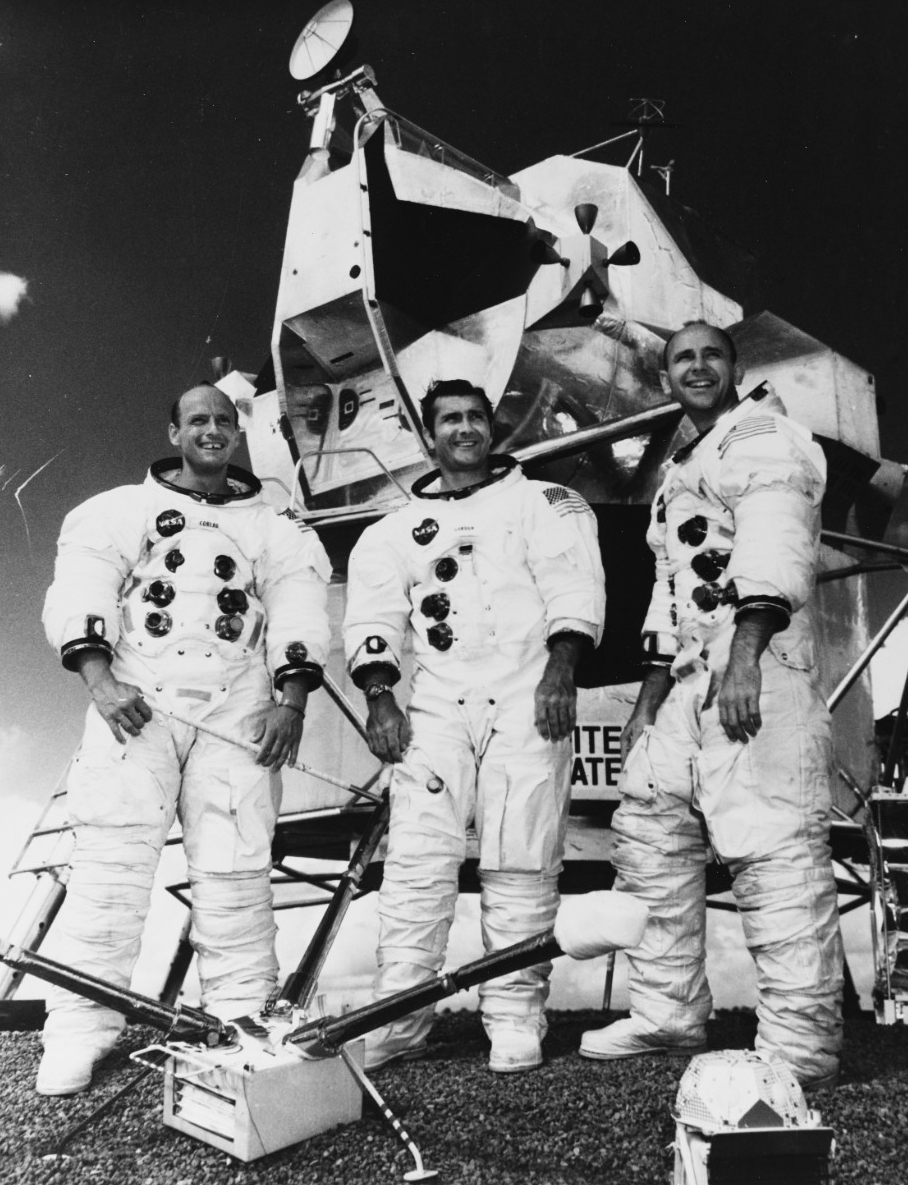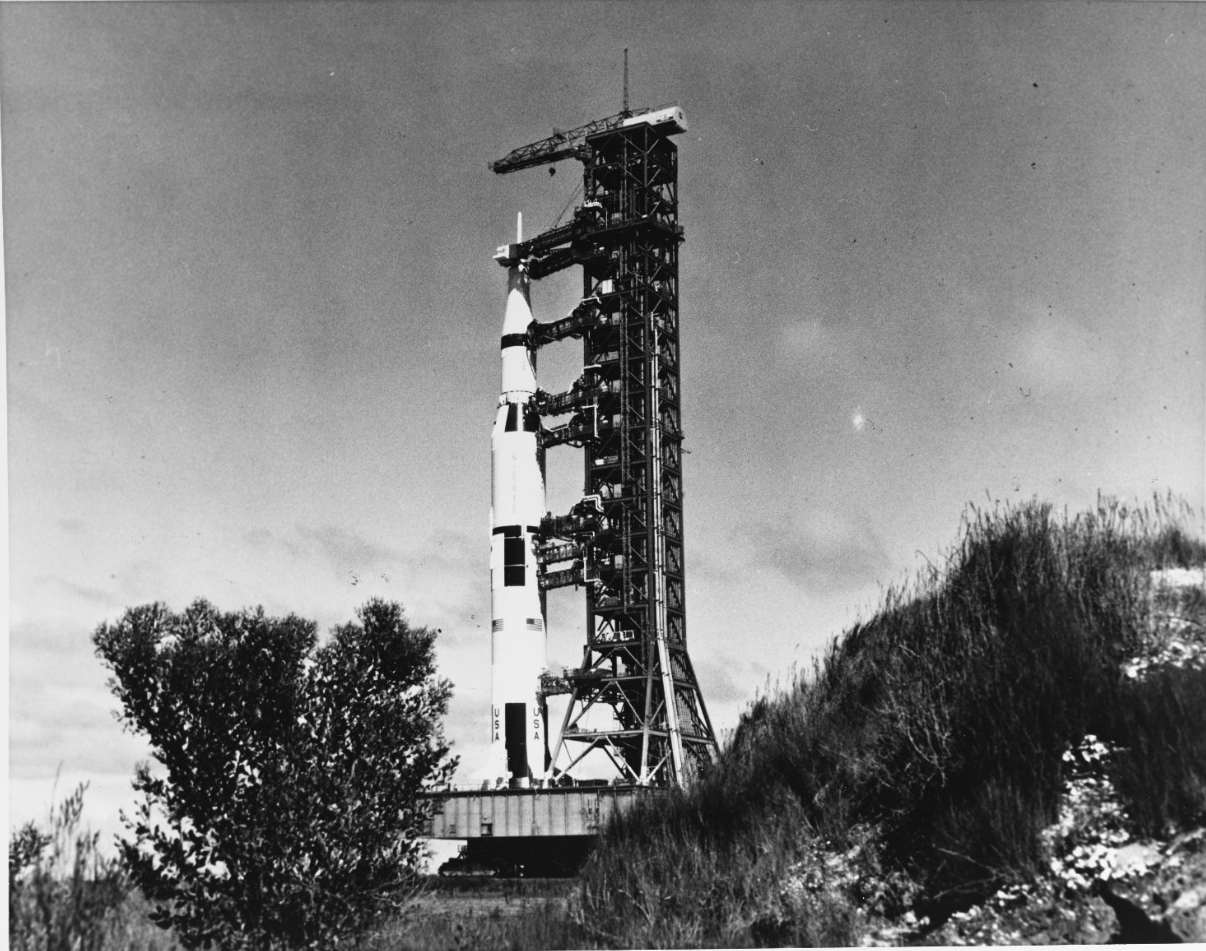Apollo 12 Mission
Apollo 12 launched on 14 November 1969. Commander Charles Conrad Jr., USN and Commander Alan L. Bean, USN, walked on the moon in the Ocean of Storms during the Apollo 12 mission. Commander Richard F. Gordon Jr., USN, Command Module Pilot, remained in lunar orbit. During the mission lasting 10 days, 4 hours, and 36 minutes, the astronauts recovered 243 pounds of lunar material. Recovery was by HS-4 helicopters from USS Hornet (CVS-12).
The Apollo 12 astronauts stand before a mock-up of their space capsule at Cape Kennedy, Florida, September 1969. From left: Commander Charles Conrad Jr., USN; Commander Richard F. Gordon Jr., USN; and Lieutenant Commander Alan L. Bean, USN. (Courtesy of National Aeronautics and Space Administration, USN 1140809)
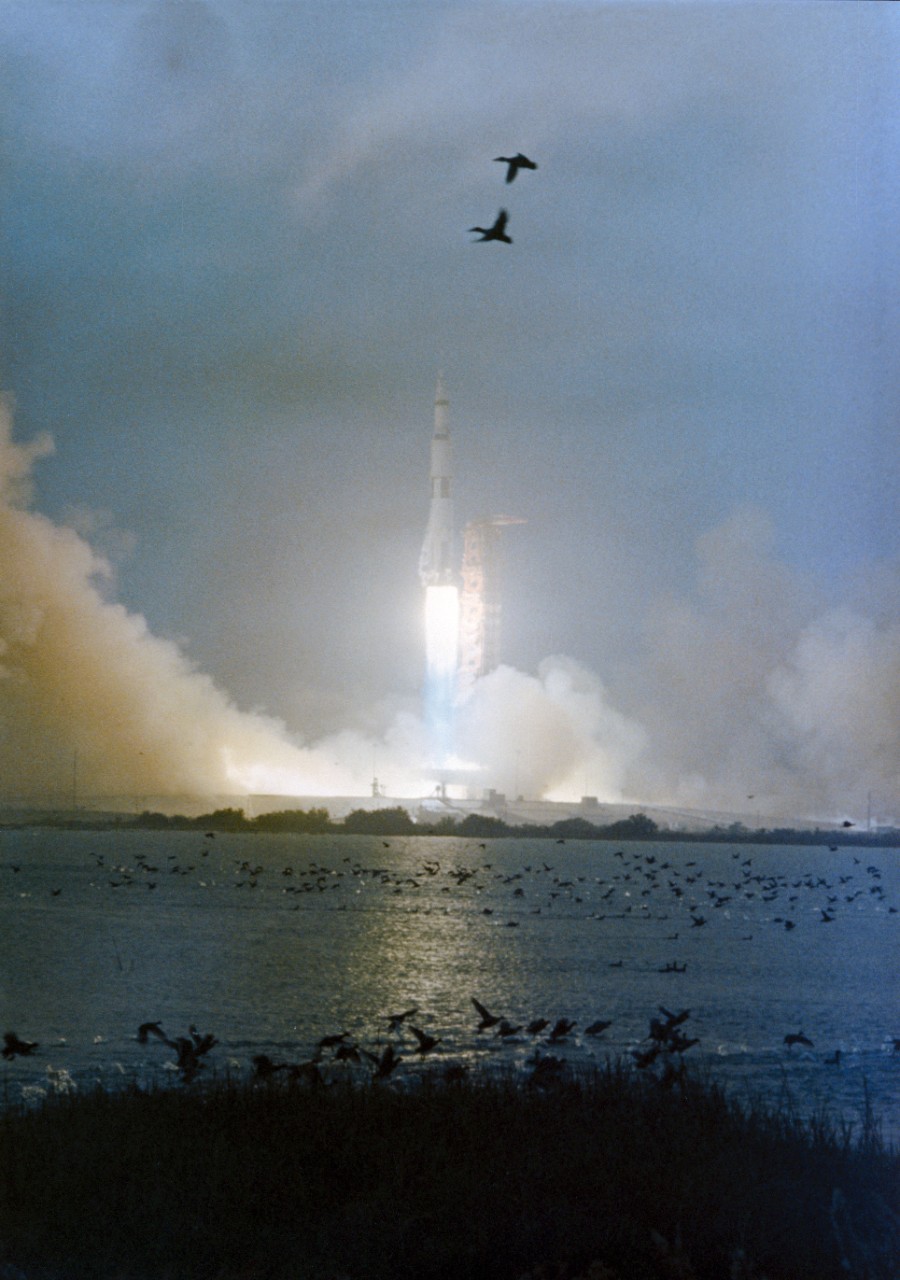
The huge, 363-feet tall Apollo 12 (Spacecraft 108/Lunar Module 6/Saturn 507) space vehicle is launched from Pad A, Launch Complex 39, Kennedy Space Center (KSC), at 11:22 a.m. (EST), 14 November 1969. Onboard the Apollo 12 spacecraft were astronauts Charles Conrad Jr., commander; Richard F. Gordon Jr., command module pilot; and Alan L. Bean, lunar module pilot. Apollo 12 was the United States' second lunar landing mission. (Image Credit: NASA)
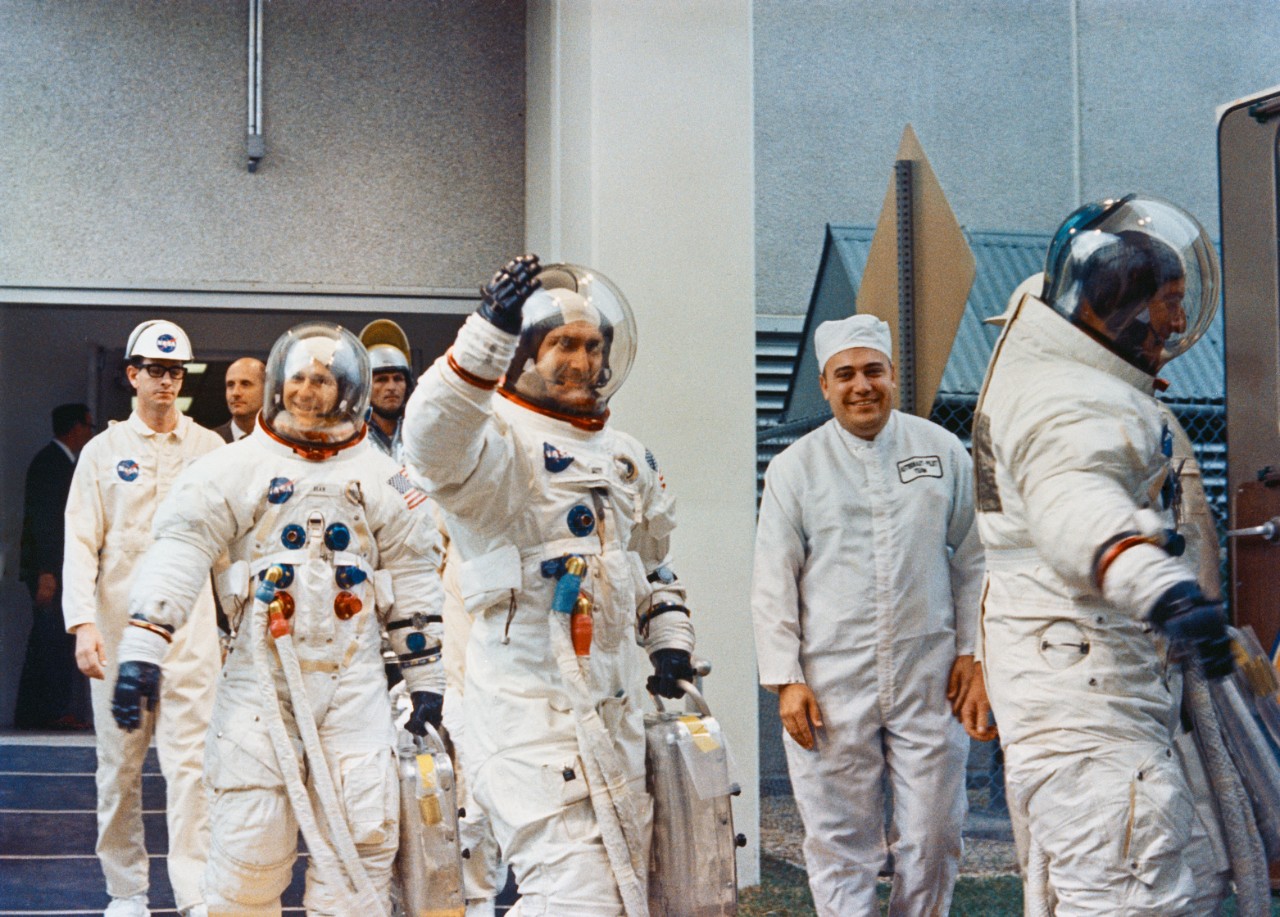
The three Apollo 12 crew members leave the Kennedy Space Center's (KSC) Manned Spacecraft Operations Building during the Apollo 12 prelaunch countdown. Leading is astronaut Charles Conrad Jr., commander; followed by astronauts Richard F. Gordon Jr., command module pilot; and Alan L. Bean, lunar module pilot. They rode a special transport van over the Pad A, Launch Complex 39, where their spacecraft awaited. (Image Credit: NASA)
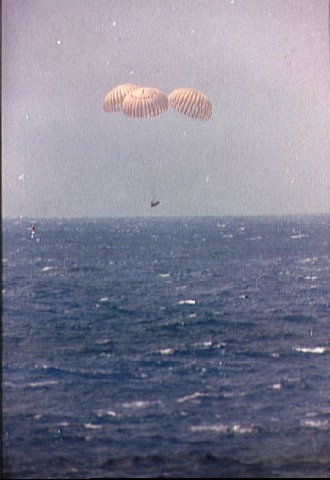
The Apollo 12 Command Module, with astronauts Charles Conrad Jr., Richard F. Gordon Jr., and Alan L. Bean aboard, nears splashdown in the Pacific Ocean to conclude the second lunar landing mission. The Apollo 12 splashdown occurred at 2:58 p.m., 24 November 1969, near American Samoa. (NASA Photo ID: S69-22728)
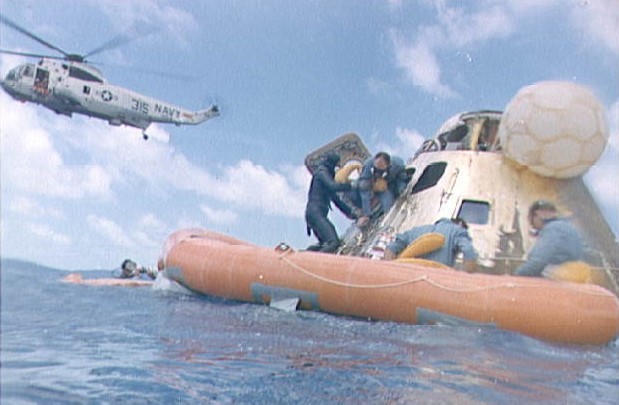
Astronaut Alan L. Bean, lunar module pilot, is assisted with egressing the Apollo 12 Command Module by a U.S. Navy underwater demolition team swimmer during recovery operations in the Pacific Ocean. Already in the life raft are Astronauts Charles Conrad Jr., commander; and Richard F. Gordon Jr., command module pilot. The Apollo 12 splashdown occurred at 2:58 p.m., 24 November 1969 near American Samoa. (NASA Photo ID: S69-22265)
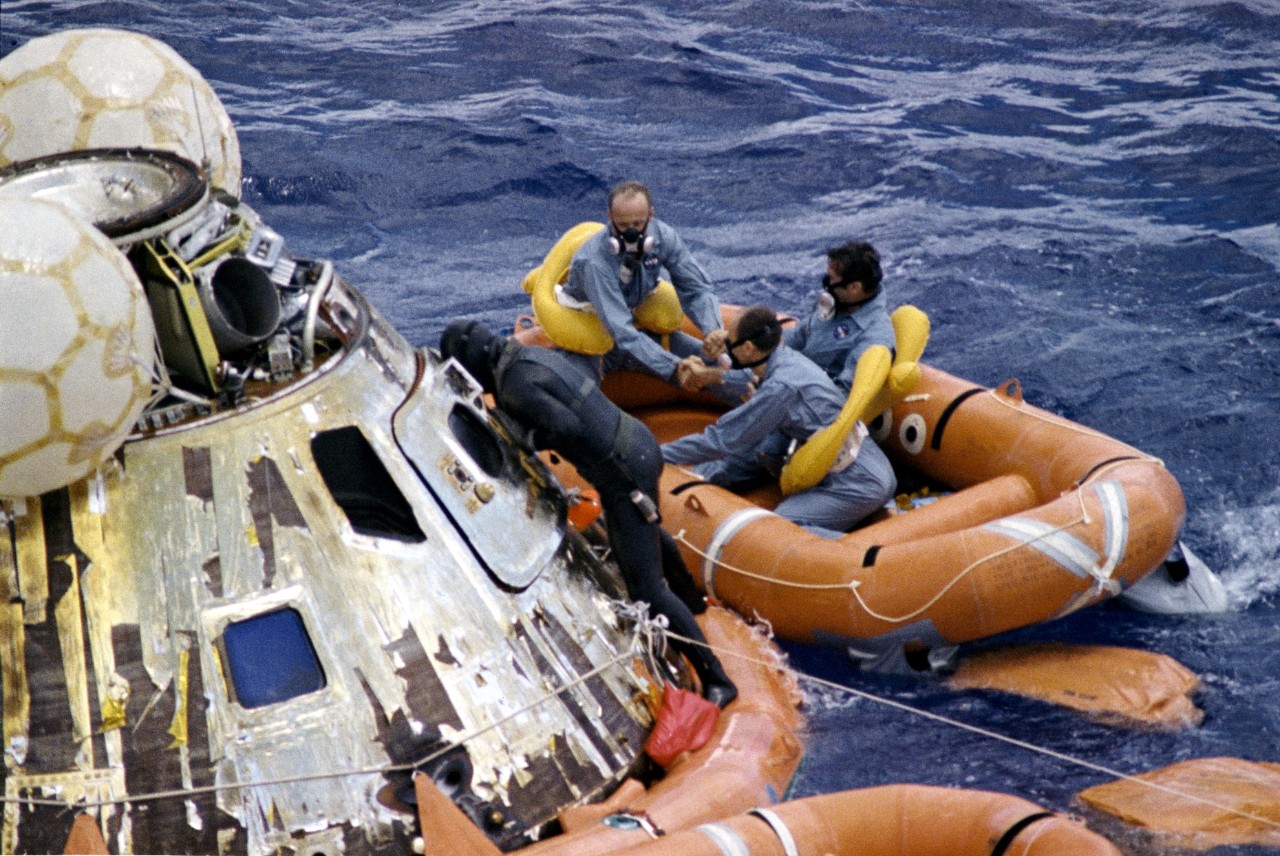
A United States Navy Underwater Demolition Team swimmer assists the Apollo 12 crew during recovery operations in the Pacific Ocean. In the life raft are astronauts Charles Conrad Jr. (facing camera), commander; Richard F. Gordon Jr. (middle), command module pilot; and Alan L. Bean (nearest camera), lunar module pilot. The three-crew men of the second lunar landing mission were picked up by helicopter and flown to the prime recovery ship, USS Hornet. Apollo 12 splashed down at 2:58 p.m. (CST), 24 November 1969, near American Samoa. While astronauts Conrad and Bean descended in the Lunar Module (LM) “Intrepid” to explore the Ocean of Storms region of the moon, astronaut Gordon remained with the Command and Service Modules (CSM) “Yankee Clipper” in lunar orbit. (Image Credit: NASA)
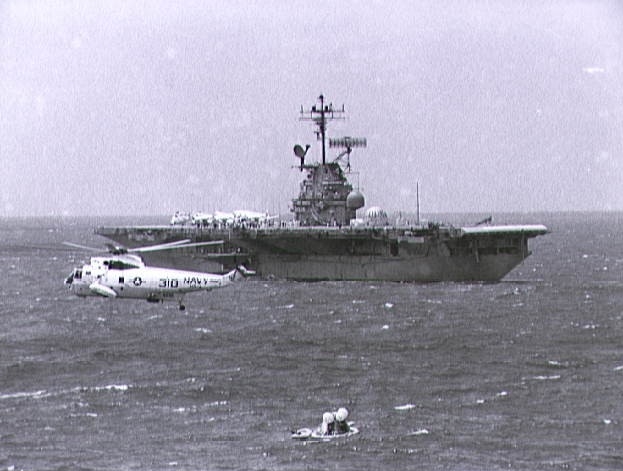
USS Hornet, prime recovery vessel for the Apollo 12 lunar landing mission, moves toward the Apollo 12 Command Module to retrieve the spacecraft. A helicopter from the recovery ship, which took part in the recovery operations, hovers over the scene of the splashdown. (NASA Photo ID: S69-22897)
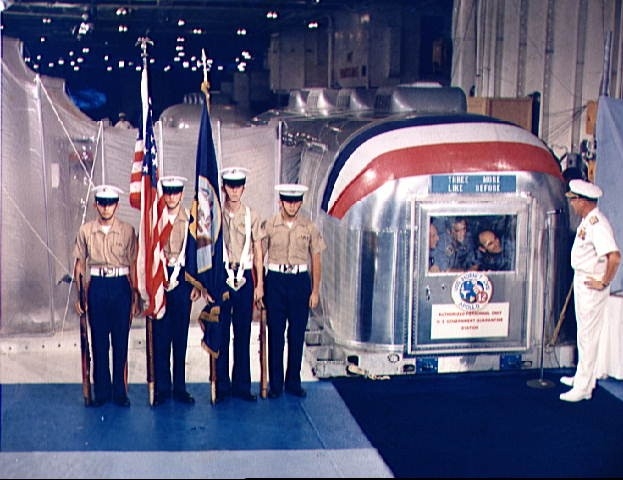
Rear Admiral Donald C. David, Commander, Manned Spacecraft Recovery Force, Pacific, welcomes the crew of the Apollo 12 lunar landing mission aboard USS Hornet, prime recovery vessel for the mission. A color guard was also on hand for the welcoming ceremonies. Inside the Mobile Quarantine Facility are (left to right) Astronauts Charles Conrad Jr., commander; Richard F. Gordon Jr., command module pilot; and Alan L. Bean, lunar module pilot. (NASA Photo ID: S69-22876)

